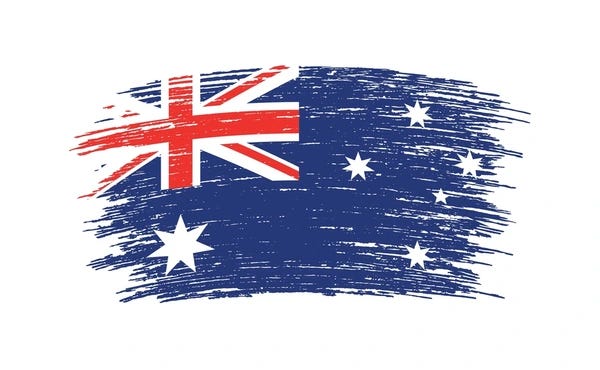How film nationality is determined around the world
I reviewed the official film nationality rules used by eighteen countries to see how each one defines ownership, and how American might be able to build it's own criteria.
Uncertainty still looms over Trump's threat to institute a 100% tariff on non-American films.
If the United States were to define what makes a film “American,” it would have to choose which aspects of production and identity matter most.
Other countries have taken various approaches to this question, each balancing clarity, flexibility, and enforceability.
Here are the main factors in play:
Financial Spend. Many countries tie national status to where the money is spent. Germany and Ireland require minimum local expenditure to unlock tax benefits.
Ownership and Control. Some systems focus on who owns the rights and who makes the key decisions. Canada, for example, demands that the producer be Canadian and hold copyright for 25 years. France and Spain also scrutinise company structure and control.
Key Personnel. Nationality or residency of the director, writer, lead cast, and heads of department is often central. Brazil uses strict ratios, while Canada and Australia assign points to creative roles.
Language. Language can act as a proxy for cultural identity. France offers 20 points for films in French, while Ireland’s Section 481 scheme awards points for English, Irish, or European languages.
Cultural Content. Some systems consider what the film is about, i.e. its themes, setting, and characters. The UK and Germany both use cultural tests that reward stories rooted in local history or society.
Treaty Co-Productions. Many countries allow films to be deemed national if they meet the terms of bilateral or multilateral treaties. These usually require proportional financial and creative input from each side. Australia and France use these to expand their film footprint, especially for international projects with little domestic subject matter.
Legal Registration. A few countries, like South Korea and Japan, use legal registration of the production company as a defining factor. This provides administrative clarity but does little to ensure economic or cultural benefits.
I have broken down the approach of 18 major film-producing nations below:
Australia – Uses a flexible cultural test (SAC) or treaty co-productions, focusing on creative control, spend, and key personnel.
Brazil – Requires Brazilian ownership and majority local cast/crew, with strict residency rules enforced through a federal certificate (CPB).
Canada – Relies on a points-based system plus ownership and control rules, with separate agencies overseeing tax credits and broadcast eligibility.
China – Grants nationality through regulatory compliance, censorship approval, and Chinese company involvement, not cultural content.
Denmark – Applies a discretionary, case-by-case approach based on cultural contribution and Danish creative involvement.
France – Uses a detailed points system focused on language, personnel, and production services, tied to its powerful subsidy mechanisms.
Germany – Combines a cultural test with financial thresholds and minimum spend requirements, closely managed by federal bodies.
India – Has no single cultural test but recognises national status via full Indian production or treaty co-productions certified by the NFDC.
Iran - Nationality tied to state approval at all stages; ideological compliance overrides all else.
Ireland – Blends cultural and economic criteria in both funding and tax systems, emphasising Irish creative leadership or contribution.
Japan – Uses a light points system for co-productions and requires Japanese company involvement, with a focus on financing and rights.
Russia - Seven legal criteria covering personnel, spend, language, and producer nationality.
South Korea – Bases nationality on corporate registration plus creative and financial contributions for public support schemes.
Spain – Enforces strict thresholds for EU personnel and production work, with mandatory certification for all national benefits.
Sweden – Applies a case-by-case assessment focused on a Swedish producer and meaningful creative input from Swedish nationals.
United Kingdom – Uses a detailed points-based cultural test or treaty co-productions, linked directly to access to tax credits.
Let’s look at each in detail:
Australia
Australia maintains a formal and highly consequential definition of film nationality, primarily for access to government financial support. A film must be officially recognised as ‘Australian’ to qualify for the Producer Offset, a refundable tax rebate worth 40% of qualifying Australian expenditure for feature films, and 30% for other formats. This classification also affects eligibility for Screen Australia funding and determines whether a title counts towards broadcaster content quotas. Two pathways exist: passing the Significant Australian Content (SAC) test, or being certified as an Official Co-production under a bilateral agreement.
Films that are not official co-productions must pass the SAC test, which is laid out in legislation and assessed by Screen Australia. The test considers five factors:
Subject matter
Production location
Personnel nationality and residency
Local expenditure
Any other relevant details.
There is no points system. Instead, Screen Australia makes a holistic judgment, balancing cultural and industrial criteria. For example, a film might succeed based on Australian creative control and local spend, even if the story is not overtly ‘Australian’. This flexibility benefits projects with international ambitions but creates uncertainty for producers trying to predict outcomes.
For co-productions, nationality is assessed differently. Screen Australia evaluates the financial and creative contributions of each partner country using a points-based system focused on the nationality of key personnel. Directors, writers, editors, and lead cast all attract points. This route offers greater predictability and is often used for projects without strong Australian subject matter but with substantial Australian involvement. Once certified, co-productions are automatically treated as ‘Australian’ for funding purposes and bypass the SAC test.
Screen Australia is the lead certifying body. It administers both the SAC assessment and the co-production program. The Department for the Arts oversees the Location and PDV Offsets and manages co-production treaties. The Australian Taxation Office processes the actual tax rebate. The Film Certification Advisory Board provides policy advice to the Minister for the Arts.
Several high-profile examples illustrate how these rules play out. Baz Luhrmann’s The Great Gatsby and Elvis both qualified for the Producer Offset, despite their American stories and settings, due to their significant Australian creative control, crew, and spend. Conversely, Taboo, a documentary series produced by Australians, was denied access, reportedly due to concerns over non-Australian subject matter and creative control, leading to legal and public disputes.
Brazil
Brazil defines the nationality of a film through a structured legal framework administered by ANCINE, the federal audiovisual agency. The designation determines access to public funding, tax benefits, screen quotas and international treaty advantages. Films must secure a Certificado de Produto Brasileiro (CPB) to be officially recognised as Brazilian. This certificate is mandatory for exhibition on Brazilian platforms and for participation in federal incentive schemes.
To qualify as Brazilian, a film must be:
Produced by a registered Brazilian company, with its headquarters and controlling interest held by Brazilian nationals or long-term residents.
The director must be Brazilian or a foreigner residing in the country for over three years.
At least two-thirds of the cast and crew must meet similar nationality or residency criteria.
While language is not strictly required to be Portuguese, some bilateral treaties stipulate specific language conditions.
The location of filming is not sufficient to establish nationality.
For co-productions without treaties, stricter rules apply, such as a minimum 40% ownership by the Brazilian company and adherence to crew ratios.
Separate rules also exist for works seeking "independent" status, which excludes links to broadcasters or pay-TV providers.
ANCINE is the primary decision-maker and enforcer. It verifies applications, issues the CPB, and oversees treaty and non-treaty co-productions under Normative Instructions 104 and 106. It also administers the national film fund (FSA), enforces screen quotas, and registers all foreign content exhibited in Brazil.
One practical example is the case of a Brazilian-Israeli co-production where the treaty allowed the original soundtrack to be in either Portuguese or Hebrew. Such flexibility does not exist in non-treaty co-productions, which face stricter requirements. The film I'm Still Here, nominated for an Oscar, drew attention not for failing to qualify but for raising questions about representation and eligibility in the wider industry. Conversely, no recent high-profile disputes over CPB issuance were found in the current research.
While the classification rules are clearly outlined in law, the application process relies on evidence submitted by producers and interpreted by ANCINE. Most disputes arise over co-productions or proof of residency. The agency has responded by digitising and streamlining CPB processes, especially for low-risk content such as music videos and pornography, which form a significant volume of applications.
Canada
A film’s nationality in Canada is critical as it unlocks a range of subsidies, tax credits, and domestic broadcast quotas. Two main bodies handle classification: the Canadian Audio-Visual Certification Office (CAVCO) handles eligibility for federal tax relief, while the Canadian Radio-television and Telecommunications Commission (CRTC) governs what counts as Canadian for broadcast regulations. A third body, Telefilm Canada, manages co-productions and provides funding. These systems mostly align but have key differences in ownership and control requirements.
To qualify as a Canadian production, a film must earn at least six out of ten points in a prescribed system. Points are awarded for:
Canadian citizens or permanent residents occupying key creative roles such as director, screenwriter, and lead performers.
To pass, one of the two lead performers and either the director or screenwriter must be Canadian.
However, meeting the point threshold is not enough. The producer must be Canadian, have full creative and financial control, and own the copyright for 25 years if the production is claiming tax credits under the CAVCO regime.
The production must also spend at least 75% of its labour and post-production budgets in Canada.
Language is relevant too. Only films in English, French, or Indigenous languages typically qualify.
Some genres are explicitly excluded, such as reality TV, advertising, and live sports.
CAVCO is the key certifying body for tax purposes. It also administers a separate regime for service productions that are foreign-owned but use Canadian crews. The CRTC handles certification for television broadcasts and recognises most CAVCO decisions but does not require the 25-year copyright rule. Telefilm Canada plays a pivotal role in approving treaty co-productions and offers funding to projects that score higher than the minimum or meet alternative criteria.
Schitt’s Creek is often cited as a fully qualified Canadian series, achieving 10 out of 10 points. Yet it deliberately avoids visible Canadian markers. Conversely, The Handmaid’s Tale and Turning Red failed to qualify because they were American-owned. This gap between technical qualification and cultural resonance is at the heart of the system’s controversies.
Critics argue the current model allows productions that feel American to qualify, while disqualifying authentically Canadian narratives created with foreign financing. The point system is also under pressure to evolve, with the CRTC exploring reforms that would expand the number of roles counted or introduce cultural criteria.
Streamers like Netflix have clashed with Canada over the requirement that a Canadian entity hold the copyright for 25 years. This demand conflicts with their global licensing strategies. The recent Online Streaming Act has brought new players into the regulatory net but faces ongoing legal challenges from industry giants.
China
China does not use a cultural or points-based system to define a film’s nationality. Instead, a film is treated as Chinese if it is produced by a registered mainland entity with official permits and passes state censorship. Co-productions with foreign partners can achieve equivalent status if they meet strict legal, financial, and ideological requirements. National classification in China is not about language, themes, or personnel but about regulatory compliance and political alignment. This affects everything from market access and censorship rules to eligibility for funding and exemption from import quotas.
For co-productions to be treated as Chinese, the film must be jointly financed, typically with at least 25% of the investment from a Chinese company.
It must include Chinese elements, such as story content, cast or crew, and shoot or post-production within China.
There are no fixed percentages for every criterion, but guidelines suggest that one-third of major actors should be Chinese and that principal crew be roughly balanced between Chinese and foreign nationals.
Recent draft rules for online content propose that only 25% of the main cast and crew need to be Chinese for web series to qualify.
The most important hurdle is censorship. Scripts and completed films must be reviewed and approved before the film is granted permits for production and public screening.
Keep reading with a 7-day free trial
Subscribe to StephenFollows.com - Using data to explain the film industry to keep reading this post and get 7 days of free access to the full post archives.






